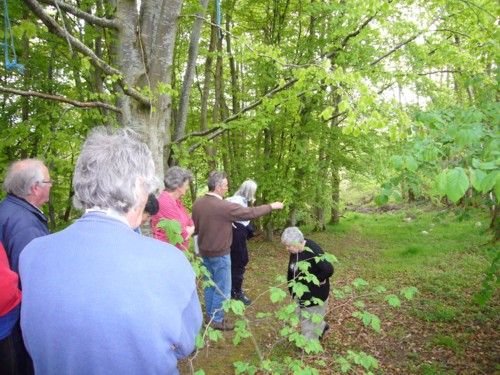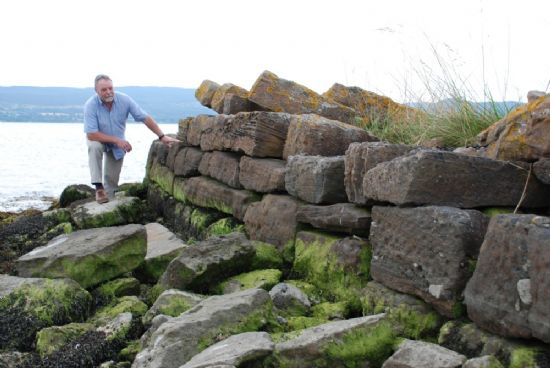Telford's Highland Heritage
21 November 2012
 Would you be interested in finding out more about one of the most influential men in the Highlands?
Would you be interested in finding out more about one of the most influential men in the Highlands? ARCH is developing plans for a new 3-year project based on Thomas Telford (1757–1834) and we’d like to know what you think of them. Is Thomas Telford, and the Caledonian Canal, his many roads, bridges, settlements and churches a subject that you’d like to find out more about? Are there some interesting sites in your area that you’d like to research?
You can let us know through our online survey or by phone, email or letter.
We’ve had lots of positive feedback on our 3-year Stop, Look and Listen programme, and so we will be running our next project along similar lines - making sure that the classes are a friendly and relaxed way to learn, so that everyone feels they can be involved without a need for previous archaeology or history experience. To help us to investigate Telford we’ll be using a whole mix of research techniques from studying old maps to online searches, photography to field surveys. There’ll also be trips to archives and museums ‘Reading the Landscape’ walks, Q GIS and digital mapping workshops, fieldwalking, finds analysis, marketing heritage workshops and experimental archaeology.
 We’re interested in focussing on Thomas Telford because he had such a major impact on the Highlands in the early 1800s. He was a civil engineer, architect and stone mason who worked throughout the UK and in Europe. He had a profound impact on the Highlands, responsible for almost 1000 miles of new roads, over 100 bridges of iron and stone, canals both large and small, many piers, harbours, tollhouses, milestones, churches, manses and even towns. The Highlands after his work was a very different place, with at long last the basis for transport between many previously remote areas of the Highlands.
We’re interested in focussing on Thomas Telford because he had such a major impact on the Highlands in the early 1800s. He was a civil engineer, architect and stone mason who worked throughout the UK and in Europe. He had a profound impact on the Highlands, responsible for almost 1000 miles of new roads, over 100 bridges of iron and stone, canals both large and small, many piers, harbours, tollhouses, milestones, churches, manses and even towns. The Highlands after his work was a very different place, with at long last the basis for transport between many previously remote areas of the Highlands. Looking at Telford’s work will give a great opportunity to get a real feel for the Highlands in the late 1700s, how people lived, what was important to them, and what buildings and transport networks already existed. Some of his work, such as the Caledonian Canal, is better known and studied, but there are many others which are little known, so there would be lots to investigate through ARCH classes. Already a Community Timelines course in Evanton has submitted information and photographs about previously unrecorded milestones on Telford’s roads, and participants on a course in Tomatin recorded the remains of a tollhouse, so you can see that there will be lots of opportunities for discovery across the Highlands.
Whilst some of Telford’s buildings are still in use today, others are decaying, at risk, or have been destroyed, so studying, recording and publicising results will both add to what is known about them and help to protect those still standing. Throughout the project we would promote the local Telford heritage through displays, digital outputs, tourist leaflets and binders of information. All the information gathered would culminate in a book of Telford’s Highland Heritage.
So let us know - good plan? bad plan? Does the thought of Telford get you enthusiastic or wanting to snooze? We’re keen to know, and will use your feedback when applying for funding.
News Archive
- 12/08/2025 ARCH August 2025 Newsletter now available
- 30/03/2025 Dingwall Station Online display
- 27/02/2025 ARCH February 2025 Newsletter now available
- 05/09/2024 Exploring Norwegians in the Contin area in WWII
- 18/04/2024 Community Engagement and Volunteering - tips for success
- 10/04/2024 Celebrating ARCH Day - 13th April in Strathpeffer
- 27/02/2024 Funding awarded from NHLF for The Golspie Fishertown Project
- 19/02/2024 Exploring Dornoch Heritage course starting Thursday 22nd February 2024
- 08/02/2024 Bookings now open for Highland Heritage Day 2024
- 24/01/2024 ARCH Jan 2024 newsletter now available
